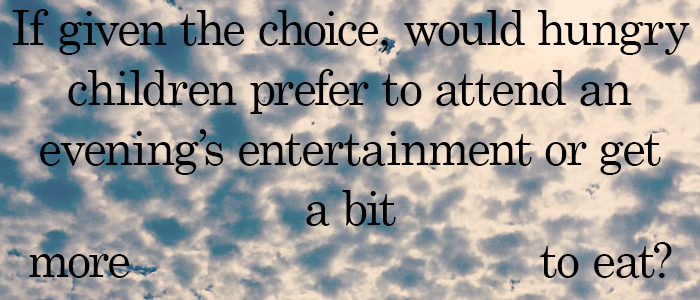Why Write?
Daniel M. Jaffe | March 2017

Having taught creative writing for more than twenty years, I am accustomed to the standard student questions of “why write?” and “why create art?” My replies about the importance of exploring self and helping readers feel less alone, although sincere, have grown somewhat formulaic and time-worn. Unexpectedly, a recent tour of Terezín, the Nazis’ ghetto-concentration camp outside Prague, has led me to renewed contemplation of writing’s value.
Our tour guide explained that Terezín was partly a Nazi social experiment: how would children react when housed separately from their parents? How would they behave when kept hungry? If given the choice, would hungry children prefer to attend an evening’s entertainment or get a bit more to eat? As the tour guide led our small group along the grassy main square of what is now a peaceful town of approximately 1,500 residents, he pointed to a three-story, mustard-colored building: “That’s where they rehearsed Brundibár, in the attic.” Brundibár. As part of their experimentation and their propaganda campaign presenting Terezín as an idyllic Jewish town, the Nazis permitted Brundibár to be performed 55 times by some of the 15,000 Jewish children incarcerated there.
Written by Adolf Hoffmeister and Hans Krása, the opera tells the story of a brother and sister trying to earn money so as to buy milk for their ill mother. Seeing a mustachioed organ grinder earn money in the street, they attempt to make music in exchange for coins…until the organ grinder chases them off his turf. Then some animals help them rally the neighborhood children to chase the evil organ grinder away; now brother and sister are free to sing and earn money. It is the story of children finding their power to banish evil, obtain food, and save mother.
In 2011, I attended a performance of Brundibár staged by the Los Angeles Opera Camp together with an accompanying children’s opera, Friedl, about Friedl Dicker-Brandeis, a self-appointed art teacher at Terezín. She encouraged the children to imagine, to dream, to draw, and paint pictures of happy times and fantasies. Friedl insisted on addressing them by name, even though the Nazis no longer used the children’s names, only their assigned numbers. She insisted that the children sign their names on their drawings and paintings, 5,000 of which she saved in suitcases hidden in one of the barrack attics (the attic of the mustard-colored building I was walking past off the town square?). Then Friedl was murdered in a gas chamber at Auschwitz.
On stage, during the performance of Friedl, all the Angeleno children performers wore yellow Jewish Star of David patches sewn onto their clothing, echoing the way Jewish children had been forced to wear them at Terezín. I saw black, Asian, Hispanic, white children all wearing those marks of minority exclusion and oppression, as if asserting that if one suffers, everyone does. On that stage, humanity was one community.
After the performance of both operas, the conductor brought up onto the stage from the audience an 81-year-old woman, Ela Weissberger, who had been interned at Terezín. As a child, she performed in every concentration camp production of Brundibár. On stage before us, Ela Weissberger withdrew from her jacket pocket and held up the very yellow Jewish Star of David patch and number identification badge she had been forced to wear in the camp. She spoke of how she had drawn and painted with Friedl, of how the drawings and paintings Friedl saved were now at the Prague Jewish Museum. She told how “Friedl was the only one to use our names.” She told how Dr. Mengele killed one of her fellow child performers because he believed the boy too short. She spoke of the murders of others. She told how she was one of only several hundred—out of the 15,000 children—who survived.
Then Ela Weissberger discussed what it felt like to be performing Brundibár: “When we were performing, we forgot where we were. We forgot our hunger.”
This recalled phrase came to mind as I walked through Terezín’s town square, and it has lingered since my return home: the notion that art can be so powerful as to make a starving child momentarily forget her hunger.
Even as art informs us, makes us think, reminds us of our pains, it simultaneously takes us out of ourselves, away from ourselves, and offers a moment of solace. This, I can now explain to my students, is why I write: to give myself the comfort I find during the process of creation, and to offer such solace to a reader during the process of reading. The magical ability to be simultaneously within a moment and outside it, to be both hungry and not.
Daniel M. Jaffe teaches creative writing in the UCLA Extension Writers' Program. He is author of the novel-in-stories, The Genealogy of Understanding (Lethe Press, 2014); the short story collection, Jewish Gentle and Other Stories of Gay-Jewish Living (Lethe Press, 2011); and the novel, The Limits of Pleasure (Bear Bones Books, 2010). Also, he compiled and edited With Signs and Wonders: An International Anthology of Jewish Fabulist Fiction (Invisible Cities Press, 2001), and translated the Russian-Israeli novel, Here Comes the Messiah! by Dina Rubina.

Daniel, I loved this. You've articulated something that is not easily articulated, and it rings true to me. Thank you for sharing it. -Mike Minchin